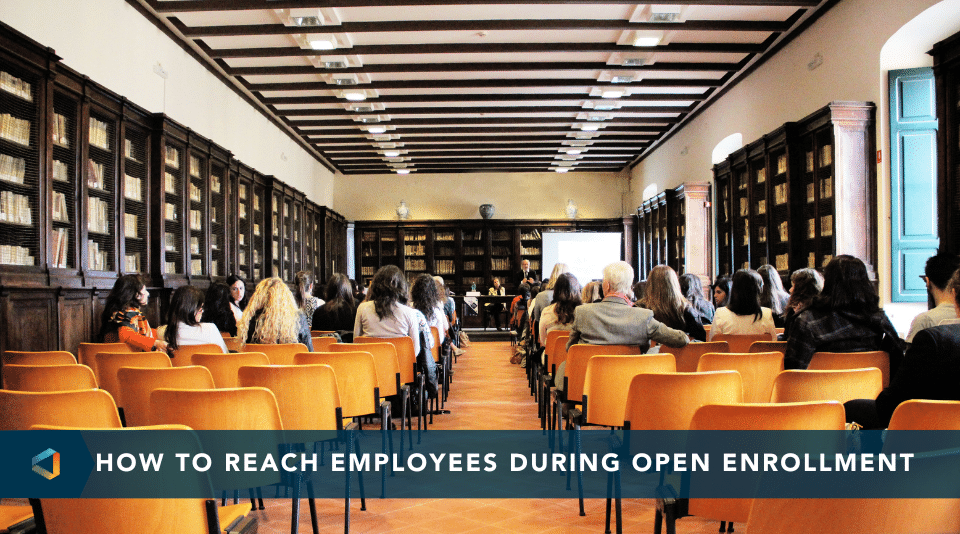Better Benefits, Healthy People
Top 10 Open Enrollment Pitfalls to Avoid
Top 10 Open Enrollment Pitfalls to Avoid
It pays to get open enrollment right.
In the historically tight labor market of the Great Resignation, benefits can be an extremely important factor in an employee's decision to stay put rather than go looking for another job. To boost your company's retention with better benefits, consider the 3 must-haves and 10 common mistakes below:
-
Update Your Employee Benefits Package With a New Holistic Approach
A holistic approach focused on overall employee wellbeing can improve health care and productivity outcomes and increase financial stability, allowing employees to live their best life now and into the future. By offering the right blend of high-performing health benefits, economic benefits, and experience strategy, an organization can manifest better business results, nurture a more positive workforce, optimize productivity, and enhance culture.
-
Don’t Ignore Your Employee’s Diverse Demographic Needs
An essential part of Workforce Evaluation is determining how the different workforce segments are represented in your organization and measuring their relative levels of engagement with the total rewards programs you offer.
- Entry Level (20-30-year-olds, Millenials and Gen Z): Single or recently married, childless. Focused on professional development, job advancement, and recognition. Light user of medical benefits, work environment and corporate culture are important. Expects technology prefers multiple focal points in presented information needs guidance and structure.
- Mid-Career (30-45-year-olds, late-stage Millenial and Gen X): Young family with growing financial obligations. Moderate to heavy user of medical benefits, heavy user of time-off and leave benefits. Focused on job and income advancement, professional development, and certifications. Prefers summarized and visually appealing communications, requires detail, expects to be asked for feedback.
- Established (45-55-year-olds, late-stage Gen X and Boomers): Lessening family obligations, elder care needs for aging parents. Moderate to heavy use of medical benefits, retirement savings, long-term care and life insurance. Focused on professional respect, leadership and mentorship opportunities. Requires individual attention, prefers practical and factual information and requires to be asked for feedback.
- Pre-Retiree (55+ year olds, Boomers and Traditionalists): Focused on securing steady income during retirement. Heavy use of medical benefits, retirement savings, long-term care. Preparing for transition into retirement. Requires individual attention, prefers peer advice, requires to be asked for feedback.
-
Listen to Your Employees
Conduct an annual survey to gauge the knowledge and satisfaction of your benefits package. Utilize the surveys to bring the voice of the employee to the table.
10 Common Missteps
Trying to accommodate the needs of a diverse workforce in a short timeframe against the backdrop of increasing options, bewildering regulations, a largely remote workforce during a pandemic can be a challenge even in the best-run companies. Avoiding mistakes is impossible but learning from them is not. Although the list may be limitless, here are ten of the most common pitfalls during open enrollment and how to avoid tripping over them.
-
Ending Open Enrollment Outside of Standard Office Hours
Employees who procrastinate will inevitably have last-minute questions and may experience technology predicaments. Make sure your open enrollment deadline falls during the workweek and during normal office hours when your HR department is still on duty to help them through the final steps in the process.
-
Overlooking Additional Decision Makers
Often, your employee is not the only one making benefits decisions. Ensure the communications you are using reach other heads of household and main decision-makers such as spouses. Extend invitations to open enrollment meetings to the entire family.
-
Offering A Short Open Enrollment Window
Most enrollments require dozens of decisions about health plans but also regarding that of other insurance products and services. Don’t force employees to rush through important decisions such as the naming of beneficiaries and determination of appropriate earnings to direct into Flexible Spending Accounts (FSA)s, Health Savings Accounts (HSA)s and 401(k)s.
-
Focusing 100% On Technology
Today’s multigenerational workforce spans five generations, all of which have different preferences and capabilities when it comes to technology. While it is perfectly acceptable to move your entire enrollment online, it will be in your best interest to augment your digital employee communication efforts with alternative, non-technology media.
-
Electing a Passive Enrollment
An employee’s life situation can change significantly year over year and running a completely passive open enrollment program may force them to miss the opportunity to reevaluate their benefits decisions. While a passive enrollment is simpler to administer, an autopilot approach to benefits enrollment simply isn’t in keeping with today’s migration to consumer-driven healthcare.
-
Not Optimizing Your Online Enrollment System
Adjusting your system to maximize performance and outcomes should be an ongoing exercise. Make your platforms as easy and intuitive as possible. Guide educated decision-making and adopt best practices such as opt-outs vs. opt-ins, product bundling, pre-populating data from prior enrollments, personalization and more.
-
Ignoring Voluntary Benefits
Today’s modern employees place value on more than just their medical, dental and vision benefits. While other benefits offerings such as Short-Term Disability (STD), Long-Term Disability (LTD), FSAs and HSAs might require more education, it’s time well spent. Illustrating how accident and critical illness insurance works well with an HDHP will go a long way in helping employees understand if a benefits selection is right for them.
-
Not Demonstrating the Value of the Benefits Program
It’s best not to assume that your employees know how competitive your benefits program is. If your employer contributions to medical premium, health reimbursement arrangement (HRA)s, and HSAs are greater than your competitors, then that is something that should be highlighted. The same goes for dental, vision, disability, life and more. If you are paying most or the entire cost of premium, remind your workforce annually of how competitive your benefits package is.
-
Forgetting Total Out-of-Pocket Costs
When comparing medical plan options, don’t focus solely on copays, coinsurance and deductibles, but rather on total out-of-pocket expenditures, including the cost of premiums. This is critically important if you are offering an HDHP as a medical plan option as it will suffer in comparison if you don’t take this approach. There are many tools out there that work with employees directly to calculate the total overall cost, your OneDigital consultant can help you navigate which of these tools may be best for you.
-
Not Funding a Health Savings Account (HSA)
Nothing incentivizes an employee to enroll in an HDHP more than an employer making contributions into a Health Savings Account. It’s also a great way to ensure that an employee takes the steps necessary to open an HSA. Furthermore, making HSA contributions contingent on participatory or outcomes-based wellness activities is also an excellent way to incentivize desired behaviors from employees.
Avoiding these pitfalls and careful planning will help create a successful delivery strategy meant to engage and reinforce the value of the benefits you provide.
For additional strategies and best practices in conducting open enrollment, visit OneDigital’s Open Enrollment Hub.




